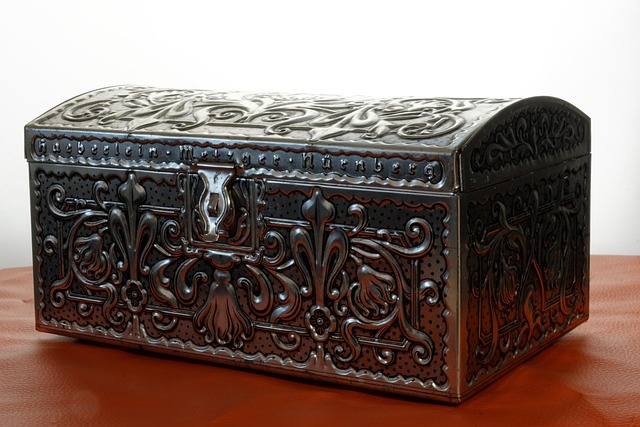Fabrication shop drawings are crucial for ensuring structural integrity in complex construction projects, such as bridges and high-rise buildings. Gussets, strategic reinforcements shaped like triangles or rectangles, are integral components detailed in these drawings. They distribute forces evenly, prevent stress concentrations, and enhance stability under varied loads. Digital software streamlines the creation process, enabling engineers to incorporate intricate gusset designs for optimal strength and durability in dynamic environments.
In construction, achieving structural integrity is paramount. Gussets and reinforcement detailing play a pivotal role in enhancing building stability and durability. This article delves into these essential components, exploring how they fortify critical joints and contribute to overall structural soundness. From understanding the fundamentals of gusset and reinforcement to implementing best practices in fabrication shop drawings, we uncover techniques that revolutionize construction methods, ensuring buildings withstand the test of time.
Understanding Gusset and Reinforcement: A Fundamental Role in Structural Integrity
Gussets and reinforcement play a pivotal role in enhancing structural integrity, especially in architectural and engineering designs. These components are crucial for maintaining the stability and strength of structures, particularly in areas subject to stress and load concentrations. By understanding their function, engineers and fabricators can ensure optimal performance and safety.
In the context of fabrication shop drawings, gussets are defined as triangular or rectangular pieces of metal that connect and reinforce joints or angles in structural components. They distribute forces evenly, preventing concentration at specific points, which could lead to weakness or failure. Reinforcements, on the other hand, involve adding stronger materials like steel bars or plates to critical sections, enhancing overall structural resilience. This meticulous consideration is vital for projects ranging from bridges and high-rise buildings to complex industrial structures, ensuring they withstand various loads and environmental conditions.
The Fabrication Shop Drawings: Blueprint for Precision and Strength
In the realm of construction, precision is paramount for structural integrity. Fabrication shop drawings play a crucial role in this regard, acting as detailed blueprints that guide the creation and assembly of components. These drawings are not mere sketches but meticulously designed plans that ensure every part meets specific dimensions and standards. By providing clear instructions to fabricators, they enable the production of high-quality, precise pieces, which are essential for enhancing structural strength.
Consider a bridge, for instance, where gussets and reinforcements are vital for supporting immense loads. Fabrication shop drawings ensure these components are cut, shaped, and positioned accurately, fostering a robust and reliable structure. In today’s digital era, advanced software facilitates the creation of these drawings, enabling engineers to incorporate intricate details, modifications, and updates promptly. This level of precision not only enhances structural integrity but also streamlines construction processes, making it an indispensable tool in the industry.
Implementing Gussets: Techniques and Benefits for Enhanced Stability
Implementing gussets is a powerful strategy in the pursuit of enhanced structural integrity, particularly in complex fabrications. This technique involves integrating triangular or rectangular pieces of material to reinforce joints and connections, preventing failure points and ensuring stability under various loads. In the context of shop drawings, which detail manufacturing and assembly instructions, gusset placement is crucial. Skilled fabrication teams carefully study these drawings to identify areas needing reinforcement, strategically positioning gussets for optimal strength.
Benefits are manifold: they not only bolster the overall structure but also allow for more creative design possibilities. By addressing potential weak spots, gussets enable designers and engineers to push boundaries, ensuring that structures can withstand demanding conditions. This method is especially valuable in dynamic environments where forces fluctuate, making it a game-changer for projects requiring longevity and durability.
Reinforcement Strategies: Adding Layers of Protection to Critical Joints
In the realm of construction and structural engineering, reinforcement strategies play a pivotal role in enhancing the integrity of critical joints. One effective method involves the strategic placement of gussets, which are additional pieces of material used to reinforce intersections or corners. These gussets act as a kind of protective armor, adding layers of strength to areas that bear significant stress, such as those found in bridges, buildings, and other large-scale structures.
Fabrication shop drawings often serve as the blueprint for this reinforcement process. Detailed plans are meticulously designed to specify the exact dimensions and placement of gussets, ensuring they complement the existing structural design seamlessly. This meticulous approach guarantees that critical joints receive the necessary protection, thereby preventing potential failures or weak points from compromising the overall structural integrity of the construction project.
In conclusion, the strategic implementation of gusset and reinforcement detailing plays a pivotal role in enhancing structural integrity. As demonstrated through our exploration of fabrication shop drawings, precise planning and execution of these techniques significantly improve stability and strength, particularly at critical joints. By understanding the diverse reinforcement strategies available, professionals can ensure structures meet the highest standards of durability and safety, solidifying their role as foundational elements in any construction project.
